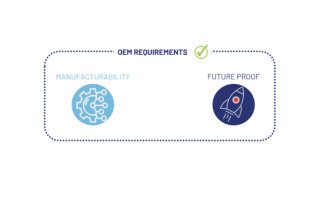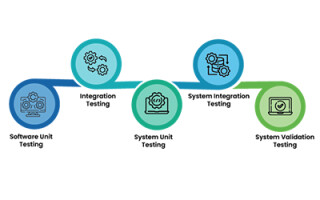Multimedia

The Evolution of Processor Cores, and Embedded World 2024
April 18, 2024
On this episode of Embedded Insiders, we’re discussing the evolution of processor cores, multitasking capabilities, future trends involving processor design, and more with Aaron Frank, senior product manager at Curtiss-Wright Defense Solutions.
Analog & Power
-
e-peas Showcases Complete Solutions for Batteryless Design with Industry-Leading Ecosystem Partners at embedded world
April 05, 2024
-
embedded world 2024 Best in Show Nominees
April 01, 2024
-
embedded world 2024 Best in Show Nominees: MEMS & Sensors
April 01, 2024
-
embedded world 2024 Best in Show Nominees: Analog, Power, & Related Components
April 01, 2024
Automotive
-
NXP Releases its Open S32 CoreRide Platform Simplifying SDV Development
March 28, 2024
-
Cadence Expands Tensilica Vision Family with Radar Accelerator and New DSPs for Automotive Applications
March 11, 2024
-
Ethernovia Unveils Single and Quad Port, 10G to 1G Automotive PHY in 7nm
March 05, 2024
-
Scoping Out the Software-Defined Vehicle: The Benefits of OTA Updates & Open Source
February 23, 2024
Consumer
-
Software-Defined Displays: The Secret Sauce for AR Smart Glasses
March 26, 2024
-
Lighter, Clearer, and More Immersive – How the Waveguide – Light Engine Combination Transforms Our View of AR Smart Glasses
March 20, 2024
-
Seeing Beyond Reality: What Are the Key Requirements That Define AR Smart Glasses' Success?
March 18, 2024
-
Wireless Haptic Vest Creates Immersive Experiences for Virtual Reality
March 15, 2024
Debug & Test
-
Debug and Analyze with PLS Development Tools During ew '24
February 05, 2024
-
TASKING Supports Arm Architecture for Automotive Development
January 29, 2024
-
Don’t Get Bogged Down in 3rd Party RTOS Code!
January 09, 2024
-
UEI Releases an ISO 17025 Compliant 6.5 Digit Digital MultiMeter
December 08, 2023
Healthcare
-
RTLS and Mobile Medical Equipment: How Hospitals Can Prevent Critical Assets from Going Missing
January 15, 2024
-
Engineering Hero: Bringing Prosthetic Arms to Life
December 28, 2023
-
Engineering Hero: The Bright Future of Bionic Limb Prosthetics
December 27, 2023
-
Engineering Hero: Treating Brain Cancer by Targeting Mutations
December 20, 2023
Industrial
-
At embedded world, CEVA Accelerates Innovative Connectivity in MCUs and SOCs for IoT and Smart Edge AI Applications
April 09, 2024
-
Road to embedded world: Ignion Transforms RF Design
April 09, 2024
-
embedded world 2024: Rutronik Presents State-of-the-Art Components and Future-Oriented System Solutions
April 05, 2024
-
Lattice to Showcase Edge-Optimized Advanced Programmability at embedded world 2024
April 05, 2024
Storage
-
New Greenliant eMMC and NVMe BGA SSDs on Display at embedded world 2024
April 05, 2024
-
embedded world 2024 Best in Show Nominees: Memory & Storage
April 01, 2024
-
Celebrate World Backup Day: Embed Resilience in Your Own Digital Future
March 28, 2024
-
Road to embedded world: Exascend Bringing Mission Critical Rad-Hard Storage Solutions
March 27, 2024
Security
-
Embracing FIPS Validation in Medical Device Security
April 15, 2024
-
Road to embedded world: Tuxera Secures Storage and Networks
April 09, 2024
-
Advanced Cybersecurity Platform Now Integrates Six Vulnerability Management Tools Into One Interactive Dashboard
April 04, 2024
-
Trusted Digital Identities, Trusted IP, and Trusted Apps: Wibu-Systems’ Formula for Success at Embedded World 2024
April 02, 2024

























